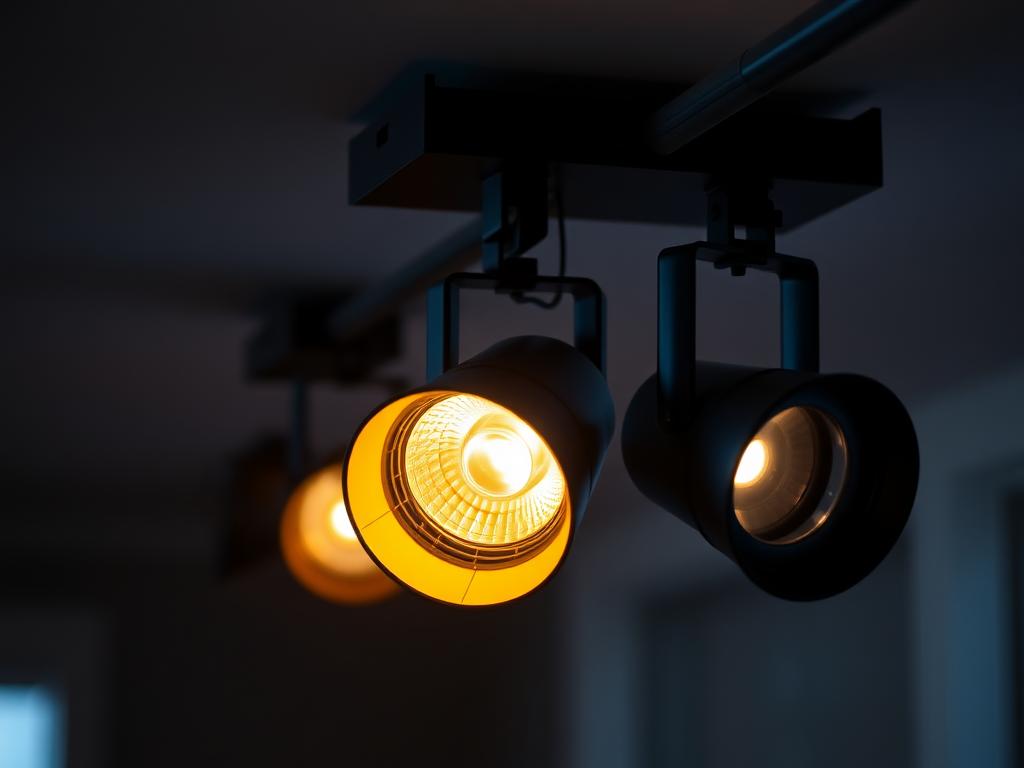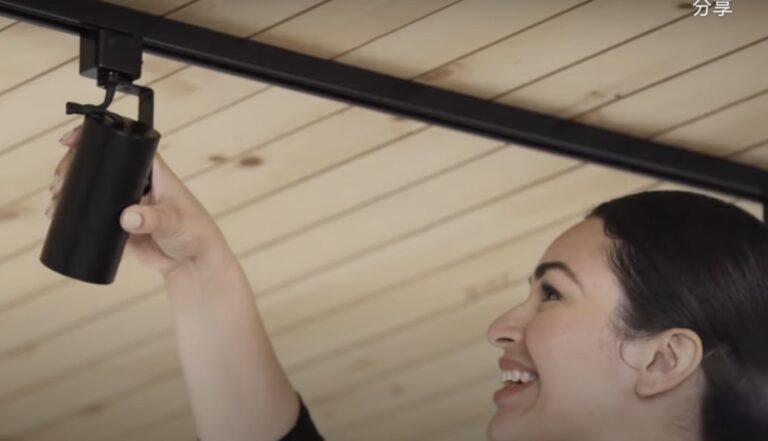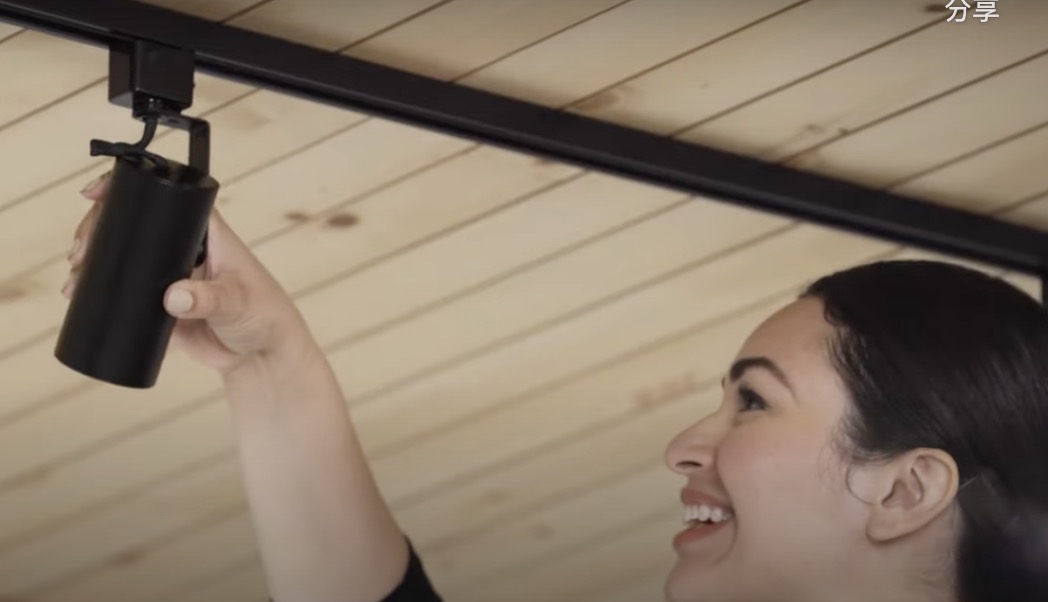-
ShanPaiWei Ind Zone, Dongguan,China

are track lights interchangable
Understanding Track Lighting: Are Track Light Heads Interchangeable?
This article dives into the world of track lighting, exploring its versatility, types, and specifically addressing the question of whether track light heads are interchangeable. We’ll break down the different types of track systems, light bulbs, and compatibility considerations, making it easy for anyone, whether you’re a homeowner, a business owner, or simply curious about lighting, to grasp these concepts. This information is crucial because understanding your track lighting system can save you time, money, and effort when upgrading or maintaining your lighting systems, especially if you are someone who manages lighting in supermarkets, chain stores, hospitals, hotels, or shops.
Table of Contents
1. What is Track Lighting and How Does It Work?
Track lighting is a versatile lighting solution where light fixtures are attached along a continuous track device containing electrical conductors. This differs from other types of ceiling lights like recessed lighting or pendant lights where each light fixture is wired individually. The track can be mounted to the ceiling or suspended from it, offering flexibility in lighting design.
- Basic components: A basic track lighting setup consists of a track, track heads (the individual light fixtures), and a power source.
- Flexibility: One of the primary advantages of track lighting is its flexibility. You can position track heads anywhere along the track and adjust the direction of light, making it ideal for accent lighting, task lighting, or general lighting.
- Power delivery: The track itself acts as a conduit for electricity. Track heads are connected to the track through a connector that draws power from the track.
As a manufacturer of track lighting products, I’ve seen how different industries leverage this flexibility. For example, supermarkets and chain stores use track lighting to highlight specific products, while hospitals might use it for focused task lighting in examination rooms.
2. What Are the Different Types of Track Lighting Systems?
There are three main types of track lighting systems commonly referred to as H, J, and L. These designations refer to the shape and configuration of the track and its internal electrical contacts. We often encounter situations where hospitals and hotels need to replace lighting systems, and understanding these types is vital for compatibility.
- H-track (Halo): This is a common type of track, often considered the industry standard. It has three metal conductors (two on the bottom and one on top) that create a single circuit.
- J-track (Juno): Juno track is similar to H-track, but its contacts are spaced slightly differently. It’s also a single circuit system.
- L-track (Lightolier): Lightolier track has its contacts positioned even further apart than the J-track. Like the others, it’s a single circuit system.
| Type of Track | Description | Compatibility |
|---|---|---|
| H-track | Standard, three conductors | Often interchangeable |
| J-track | Similar to H, different spacing | Sometimes interchangeable |
| L-track | Widest spacing | Rarely interchangeable |
In my experience, many of our clients in the retail sector prefer H-track systems for their versatility. The track system allows the light heads to be easily moved and adjusted, providing different lighting options based on the needs of the store.
3. Are Track Light Heads Interchangeable Between Different Track Types?
The short answer is: it depends. The interchangeability of track lighting hinges on the type of track system you have. Track heads from one type of track are generally not compatible with another type of track due to the different spacing and configuration of the electrical contacts. It is important to match track and track head types.
- H and L track systems: It is important to remember that you don’t mix and match these two types of track systems.
- J track: J track is sometimes considered to be the same as H track, but you should never assume that the track heads fit either track type.
It is important to remember that track heads from one track type may not work with track heads from another track type.
4. Why is Compatibility Important in Track Lighting?
Compatibility in track lighting is crucial for both safety and functionality. Using incompatible track heads on a track can lead to electrical problems, including short circuits, damage to the fixture, or even fire hazards.
- Safety: Incorrectly matched components can cause overheating or electrical shorts.
- Functionality: Incompatible track heads might not make proper contact with the track, resulting in flickering lights or no light at all.
- Longevity: Using the correct components ensures the longevity of your track lighting system.
In my years of manufacturing track lighting, I’ve seen firsthand the consequences of ignoring compatibility. A hotel once tried to force incompatible track heads onto their existing track, resulting in a costly repair and a significant safety risk. Therefore, I always advise customers to double-check compatibility before purchasing.
5. How Do I Choose the Right Track Lighting for My Needs?
Choosing the right track lighting involves considering several factors, including the type of track, the light bulbs, and the overall lighting design you’re aiming for. Hotels and shops often consult with us on lighting projects to make the right choices for their specific needs.
- Assess your needs: Determine the purpose of your track lighting. Do you need task lighting, accent lighting, or general lighting?
- Choose the right track type: Consider the layout of your space and the flexibility you need. H-track is a popular choice for its versatility. The length of the track you will need also plays a major role in what track type you will need. The area of the room will also need to be measured to make sure your track lighting is powerful enough to give you the right amount of light.
- Select the right light heads: Track heads come in various styles, including pendant, spotlight, and floodlight designs. Choose track light heads that suit your aesthetic and functional requirements.

6. Can I Mix and Match Different Light Heads on the Same Track?
Yes, you can mix and match different light heads on the same track as long as they are compatible with the track type. This flexibility allows you to create a customized lighting solution that meets your specific needs. You may want to add more than one type of light head to help you achieve your desired lighting effect. You can add a light bar or different light shades.
- Variety: Use a combination of spotlights for accent lighting and floodlights for general lighting.
- Style: Combine different styles of track heads to add visual interest to your space.
- Flexibility: Easily change the lighting layout by adding or removing track heads as needed.
For example, a chain store might use spotlights to highlight featured products and pendant lights over the checkout counter, all on the same track. Remember, using the correct track heads for your system will give you the best chance of not having to replace the entire system.
7. What are the Benefits of Using LED Track Lighting?
LED track lighting has become increasingly popular due to its energy efficiency, longevity, and versatility. As a manufacturer, we’ve seen a significant shift towards LED track lighting in various sectors, including supermarkets and hospitals.
- Energy efficiency: LED bulbs use significantly less energy than traditional incandescent or halogen bulbs.
- Longevity: LED bulbs have a much longer lifespan, reducing the need for frequent replacements.
- Brightness: LED track lighting provides bright, consistent light, making it ideal for various applications.
| Feature | LED Bulbs | Incandescent/Halogen Bulbs |
|---|---|---|
| Energy Efficiency | High | Low |
| Lifespan | Up to 25,000 hours | 1,000-2,000 hours |
| Brightness | High, consistent | Can vary, may dim over time |
| Heat Emission | Low | High |
| Cost | Higher initial cost, lower operating cost | Lower initial cost, higher operating cost |
8. How Do I Install a Track Lighting System?
Installing a track lighting system can be a DIY project, but it’s essential to follow safety precautions and instructions carefully. If you’re unsure, it’s always best to consult a lighting professional.
- Planning: Plan the layout of your track and the placement of track heads. Consider the location of electrical outlets and the areas you want to light.
- Mounting: Securely mount the track to the ceiling using appropriate hardware.
- Wiring: Connect the track to the power source. This typically involves connecting the track to an existing electrical box.
- Attaching track heads: Once the track is installed and wired, attach the track heads by inserting them into the track and twisting them into place.
- Testing: After installation, test the system to ensure all track heads are functioning correctly.
9. What are Some Creative Ways to Use Track Lighting in Different Settings?
Track lighting offers a wide range of creative possibilities for different settings, from homes to businesses.
- Retail stores: Use track lighting to highlight merchandise, create window displays, and enhance the overall shopping experience.
- Hospitals: Track lighting can be used in patient rooms for adjustable task lighting, in hallways for general illumination, and in operating rooms for focused surgical lighting.
- Hotels: Create a welcoming ambiance in lobbies, illuminate artwork in hallways, and provide adjustable lighting in guest rooms.
- Homes: Use track lighting in kitchens for task lighting over countertops, in living rooms for accent lighting on artwork or architectural features, and in living rooms and bedrooms for adjustable reading lights.
- Art Galleries: Use track lighting to highlight artwork and provide a flexible lighting solution for changing exhibits.
We offer a moving head spotlight that is perfect for retail stores. You can easily change the direction of the light to highlight your ever-changing products.
10. What are Some Common Mistakes to Avoid with Track Lighting?
While track lighting is versatile and user-friendly, there are some common mistakes to avoid.
- Overloading the track: Each track has a maximum wattage capacity. Avoid overloading the track by using too many high-wattage light bulbs.
- Incorrect spacing: Ensure proper spacing between track heads to avoid creating dark spots or overly bright areas.
- Ignoring compatibility: Always check the compatibility of track heads with the track type to prevent electrical problems.
- Neglecting maintenance: Regularly clean track heads and check for loose connections to ensure optimal performance.
Can I use any type of bulb in track lighting?
No, you should only use bulbs that are compatible with the track lighting system and the track heads. Most modern track lighting systems are designed for LED bulbs, but some may also accept halogen or incandescent bulbs
How many track heads can I put on a single track?
The number of lights you can put on a single track depends on the track’s wattage capacity and the wattage of the bulbs you’re using. The number of lights will also depend on the length of the track and the area of the room you are trying to light. Be sure to check the manufacturer’s specifications for your track to determine the maximum number of track heads it can safely support.
Is track lighting suitable for all types of ceilings?
Track lighting can be installed on most types of ceilings, including flat, sloped, and vaulted ceilings. However, the installation method may vary depending on the ceiling type.
Can I install track lighting myself, or do I need an electrician?
While some simple track lighting kits can be installed as a DIY project, it’s generally recommended to hire an electrician for more complex installations, especially if you’re not comfortable working with electricity.
How do I adjust the direction of light with track heads
Most track heads are designed to be adjustable. You can typically rotate the track head horizontally and vertically to direct the light where you need it.
What do I do if my track light stops working?
First, you will want to change the light bulb. If that doesn’t work, check to see that the track head is firmly in place. It is possible that the track head is not connecting with the track to get power. You should also check to make sure the circuit type on the track head matches the circuit on the track. If none of these solutions work, you may need to replace the track or the track head.
Conclusion
Here are the most important things to remember about track lighting:
- Track lighting is a versatile lighting solution that offers flexibility in lighting design.
- There are three types of track lighting systems: H, J, and L, each with different compatibility requirements.
- Track light heads are generally not interchangeable between different track types.
- Compatibility is crucial for safety and functionality.
- LED track lighting offers numerous benefits, including energy efficiency and longevity.
- Proper installation and maintenance are essential for optimal performance.
- Check out our privacy policy to learn more about our manufacturing practices.
- Choosing the right type of track lighting can be hard, so consider your lighting options.
- Track lighting systems are available for many different types of buildings.
- Track lighting provides the perfect lighting solution for many different types of businesses.
If you’re looking for high-quality track lighting solutions for your supermarket, chain store, hospital, hotel, or shop, we invite you to explore our range of products. Our track light products are designed with your needs in mind. We also offer linear track lighting to help you customize your space. Don’t hesitate to contact us to discuss your specific requirements and discover how our track lighting can transform your space. We also offer rail lighting systems if you want something unlike track lighting.






